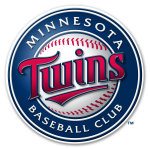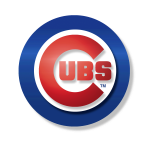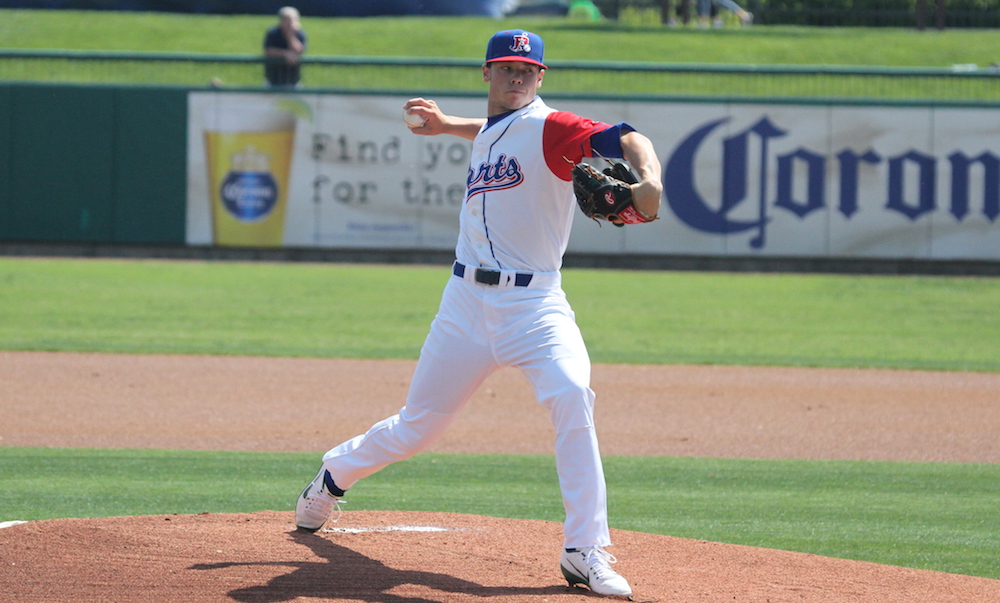Feature Photo: Daulton Jefferies, RHP, Athletics
(Photo by Chris Lockard)
Welcome back to baseball! The 2080 crew is back in business after the first week of the 2017 minor league action, and newcomer Alexis Collins, Dave DeFreitas, Nick J. Faleris, and Melissa Lockard report in with looks at six prospects who stood out in their views from the fields. Be on the lookout for weekly 2080 Prospect Spotlights updates throughout the season!
Ed. Note: For the remainder of the 2017 season you’ll be able to access our full season of prospect spotlights by bookmarking our 2017 Prospect Spotlight Table. 2080’s 2017 Prospect Video Library has also been launched – Mark Shreve
2080 PROSPECT SPOTLIGHTS
Class A
 Eduardo Del Rosario, RHP, Twins (Class A Cedar Rapids, Midwest League)
Eduardo Del Rosario, RHP, Twins (Class A Cedar Rapids, Midwest League)
Ht/Wt: 6’0”/145 B/T: R/R Age (as of April 1 2017): 21y, 10 m
Del Rosario made his state-side debut in 2016 totaling 51 1/3 innings in 12 rookie ball starts. The righty struck out 53 while allowing just 13 earned runs on 42 hits and nine walks – good for a 5.89 SO/BB rate, 0.994 WHIP and 2.28 ERA. Through two full season starts with Class A Cedar Rapids he hasn’t missed a step, as the former J2 signee has tallied 10 2/3 innings of work and allowed one earned run on five hits and three walks while punching out 14.
In his opening day start at Beloit, Del Rosario sat comfortably in the 89-to-93 mph velocity band with his fastball, bumping 95 mph on multiple occasions and showing solid arm-side life. His best secondary offering was an above-average changeup that came with big-time arm speed and plane deception, proving particularly effective against same-side bats, drawing empty swings and soft contact alike. He spun both a low-80s slider with two-plane action and an upper-70s curveball with solid shape and average depth. The slider looks like the better offering of the two, and both could grade out as at least average in time.
Del Rosario works with a quick and easy arm action, decelerating well while maintaining good balance and a steady head throughout. He’s more control over command at present, but it’s solid-average control that should grow to plus once he has cleaned up some of the idiosyncrasies in his mechanics – particularly exiting his step-in to and through the start of his stride – that can periodically throw off both his timing and the consistency in his release. It’s an awfully impressive skill set in a precocious package, making Del Rosario a must follow in 2017, and excellent candidate to shoot up prospect lists by season’s end.– Nick J. Faleris
High A
 Daulton Jefferies, RHP, Athletics (High A Stockton, California League)
Daulton Jefferies, RHP, Athletics (High A Stockton, California League)
Ht/Wt: 6’0” / 180 B/T: L/R Age: (as of April 1, 2017): 21y, 8m
Another of Athletics’ 2016 first-round picks (in the Competitive Balance A (CBA) round at #37 overall – along with A.J. Puk (LHP, Athletics), at #6 overall) – Jefferies made his 2017 debut on April 9, starting for the High A Stockton Ports. Calf and shoulder injuries limited Jefferies to 50 innings in his junior season at Cal last year and knocked him into the CBA round, where the A’s were happy to pick him up. Oakland limited him to just 11 ⅓ innings of Rookie ball last season, and kept him off the mound during fall instructs, but he is healthy and pitching without restrictions to start the 2017 season.
Jefferies is part of an eight-man tandem rotation for the Ports, so he will be tapped at 65-pitches-per outing while pitching on three-days rest. He put those pitches to good use in his Ports’ debut, allowing just two first-inning singles in four frames. He retired the final 10 batters he faced and struck out two, while walking none and recording six ground ball outs.
Jefferies showed good rhythm and pace on the mound in his debut, and he mixed his pitches well. His two-seam fastball sat 88-to-92 mph and had late life down in the zone. Jefferies threw his cutter at 88-to-91 mph and it had sharp, late lateral bite. His slider averaged 79 mph and served as a change-of-pace, off-speed offering when played off of his two fastball offerings. Jefferies commanded his changeup well, and although it was coming in a bit firm in the 86 mph range, he was still able to get several hitters out on their front foot.
Jefferies isn’t a big guy by any means, but he generates a solid downhill angle from his clean, over-the-top delivery. An infielder in high school, Jefferies showed athleticism in his delivery and while defending his position. His repertoire and build are reminiscent of Tim Hudson (RHP, A’s, Braves, Giants, 1999-2015). Jefferies’ health will be closely monitored given last year’s injuries, but he is more polished at this point as a 22-year-old second-year pro, and he could reach Double-A Midland later this year. Early indications are that Jefferies has the stuff the A’s thought he’d have to justify the high draft choice. It’s not unreasonable to forecast a mid-rotation starter profile down the line for Jefferies, though it’s still a limited sample size of pro competition. – Melissa Lockard
 Beau Burrows, RHP, Tigers (High A Lakeland, Florida State League)
Beau Burrows, RHP, Tigers (High A Lakeland, Florida State League)
Ht/Wt: 6’2”/200 B/T: R/R Age (as of April 1 2017): 20y, 6m
The Weatherford High School (TX) product has progressed steadily through the Tigers’ system since becoming the first-round (#22 overall) selection by Detroit in the 2015 MLB Draft. Burrows put together a solid full season debut in 2016 with Class A West Michigan, navigating 20 starts and 97 innings of work while holding opposition bats to a .240 batting average, and allowing just two home runs over the course of the season. After bumping up to High A Lakeland to start 2017 Burrows has looked sharp, working 10 1/3 innings over two starts and allowing just two earned runs on nine hits and three walks while striking out nine.
In his April 11 start against Clearwater (Phillies) saw the well-put-together righty working 92-to-95 mph most of the evening, and reached 96 mph on multiple occasions, including his final inning of work. Typically an above-average offering, his curveball was inconsistent during this outing, frequently lacking bite. His low-80s changeup, however, served as a capable out pitch and a nice change-of-pace offering from his heater. The offspeed showed solid depth with some fade and was effective in drawing plenty of swings and misses – particularly when ahead in the count.
The raw ingredients are there for Burrows to develop into a quality number three or number four starter, but he will need to find more consistency in his secondaries and better in-zone command with the fastball. He has seen a slight uptick in velocity to start 2017, which is a good sign, and the emergence of his changeup as an effective offering – on a night when his usually dependable curveball was not there for him – speaks well of the progress he’s made with the off-speed stuff. –Nick J. Faleris
Double-A
 Franmil Reyes, OF, Padres (Double-A San Antonio, Southern League)
Franmil Reyes, OF, Padres (Double-A San Antonio, Southern League)
Ht/Wt: 6’5”/240 B/T: R/R Age (as of April 1, 2017): 21y, 8m
The last time we checked in with the Padres’ minor league slugger, Reyes was finding his way in High A and enjoying the increase in power numbers that are often associated with Cal League ballparks. Reyes hasn’t needed a ton of help in the strength department thus far, and he remains one of the bigger raw-power guys in the minor leagues. That said, in 2016 he struggled to consistently translate that strength to game power, due in large part to the length of his stroke and the stiffness of his actions. Reyes is off to a hot start in his first taste of Double-A action, and while the sample size is exceptionally small, he has not only shown better at-bats and a willingness to take the ball the other way, but he has a looseness in how his hands work that did not exist in 2016. Reyes appears to have dropped a bit of the baby-fat that gave him a more rounded frame in seasons’ past and now looks much leaner and stronger, a sign of him growing into his body and perhaps finding more coordination. Franmil is a huge individual, so it should come as no surprise that it might take a little longer for him to find consistency in maneuvering his immense frame. While there is still a good deal of length to his swing, the bat speed has looked better through this first week. Reyes has also put up much better at-bats early on, working himself into more hitters’ counts and shortening the swing when he gets two strikes on him. One of the biggest knocks against the young slugger has been the swing and miss — if his current approach continues, Reyes could be looking at a season of vastly-improved contact rates, which would then allow the raw power to better translate into games. -Dave DeFreitas
 Dan Slania, RHP, Giants (Double-A Richmond, Eastern League)
Dan Slania, RHP, Giants (Double-A Richmond, Eastern League)
Ht/Wt: 6’5” / 275 B/T: R/R Age: (As of April 1, 2017): 24y, 11m
Initially drafted as a reliever in the fifth round of the 2013 MLB Draft out of Notre Dame, Slania made 124 relief appearances from 2013 to 2016, before being converted to a full-time starting role near the end of May last year while with Double-A Richmond. From late May on, started 12 games for the Flying Squirrels before being bumped to Triple-A Sacramento for two late-season starts to finish off a season in which he threw 119 2/3 total innings with a 1.15 WHIP, 111 strikeouts, and a 2.93 ERA.
The Giants are intent on continuing his development as a starter from here, and his Opening Day start with the Flying Squirrels was an impressive six-inning performance in an 11-1 win over Hartford. At 6-foot-5, he has a thick frame, athletic build and broad shoulders, and looks lighter than his listed weight. He showed the ability to locate his three-pitch mix with above-average command on the night and kept the opposing hitters off balance, as evident by his eight strikeouts.
His average fastball sat 91-to-92 mph (T93) and he commanded it well in the zone from a true 3/4’s arm slot, and his fluid mechanics and large frame give him some deception by being able to hide the ball on the back side well. The motion makes his late-fading 81 mph changeup even more effective, along with having excellent velocity separation from the fastball, to make it an above-average offering. He also throws an average-or-better curveball with tight spin and sharp 12-to-6 break that consistently had hitters swinging.
Slania continued to hit his target and keep his velocity up as he turned the lineup over three times, but he did see some hard contact the third time – though it netted mostly ground ball outs. He did have an eyesore of a GO:AO ratio from 2014-2016 (0.66, 0.73, 0.80 in those years), so he’ll need to get hitters working the top half of the ball more to keep the ball in the park, and his fringy control remains an issue, though it’s improving (3.42 BB/9 in 2016 across three levels, down from 4.75 BB/9 in 2015 in the High A California League).
Due to the Giants’ acknowledged need for developing starting pitching from within, Slania’s first start was an encouraging kick-off to his season. His early-season goals will be to show that he has the stuff to consistently turn over lineups, work deep into starts to build some durability, and to improve his ground ball rate. Following this start, he was bumped right back up to Triple-A Sacramento, where he finished 2016, and he could see a regular turn there if he continues to progress in the starter’s role. If his control can stabilize at average, we could be looking at a future ceiling as that of number four starter for Slania, with a floor as that of a swingman/middle-reliever, where he has already shown his effectiveness as a pro. – Alexis Collins
Triple-A
 Jeimer Candelario, 3B/1B, Cubs (Triple-A Iowa, Pacific Coast League)
Jeimer Candelario, 3B/1B, Cubs (Triple-A Iowa, Pacific Coast League)
Ht/Wt: 6’1”/210 B/T: S/R Age (as of April 1, 2017): 23y, 5m
‘Enfuego’ is an understatement when it comes to Candelario’s 2017 start after being one of the last sent out to the minors towards the end of big league spring training. Candelario jumped onto the Cubs’ radar after a solid 2014 season, and then a real breakout 2015 that saw him stroke 10 jacks and 35 doubles. He then cemented his prospect status by repeating the offensive feat while burning through Double-A and Triple-A pitching with 39 doubles and 13 long-balls last year. So far this year, Candelario is showing that he may have little left to prove in the minor leagues, and he could force the Cubs’ hand if this type of extra-base hit damage is still going on in mid-May.
Candelario has pop and is a big strong kid, however his game is going to be to the gaps, and where he gets in trouble is when he starts thinking that he needs to do more. He has always has a good approach at the plate and is relatively comfortable hitting with two strikes, but can be borderline passive at times, setting himself up to have to battle through pitchers’ counts. Couple that with him over-swinging at times thinking that he needs do more home run damage, and suddenly this kid, who is a doubles machine, is faced with having to square up an out-pitch when down in the count.
The glove continues to be solid, and despite getting a lot of looks at first base in spring training, third base remains his best spot. That said, Chicago has a guy there already who’s pretty good, so expect Candy to continue to shuttle back and forth between the corner-infield positions. The ingredients are there for Candelario to be an impact-type bat in a big league lineup — but he will have to show that he can turn the corner and learn to throttle up and back, adjusting in step with major league arms. – Dave DeFreitas


